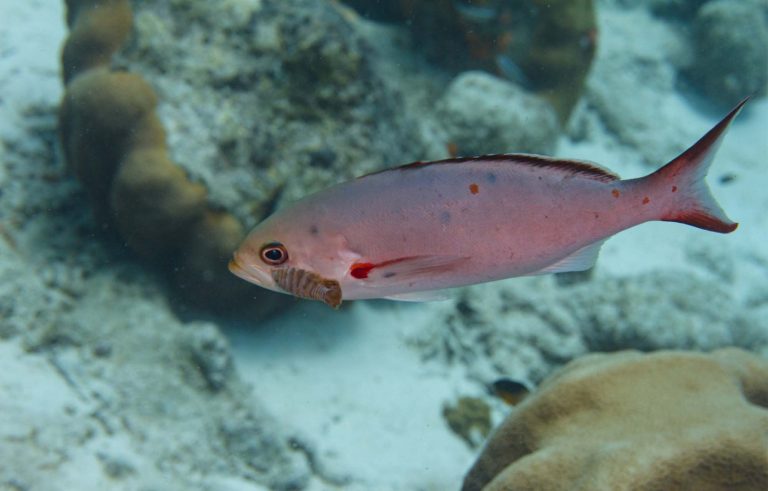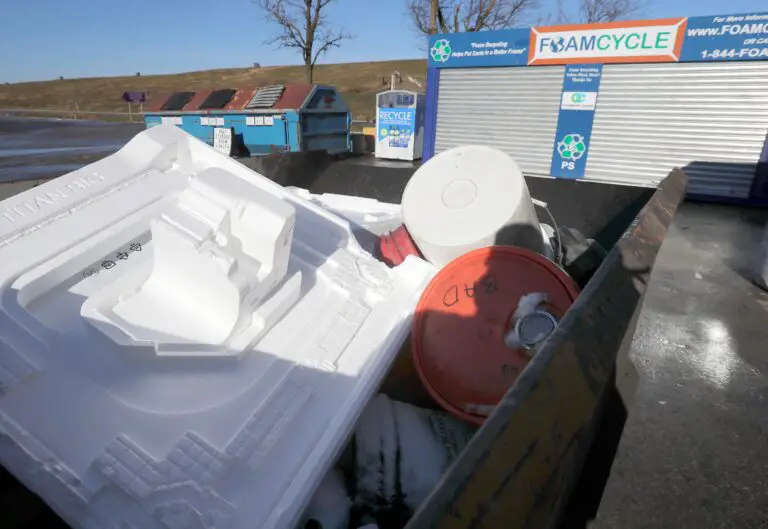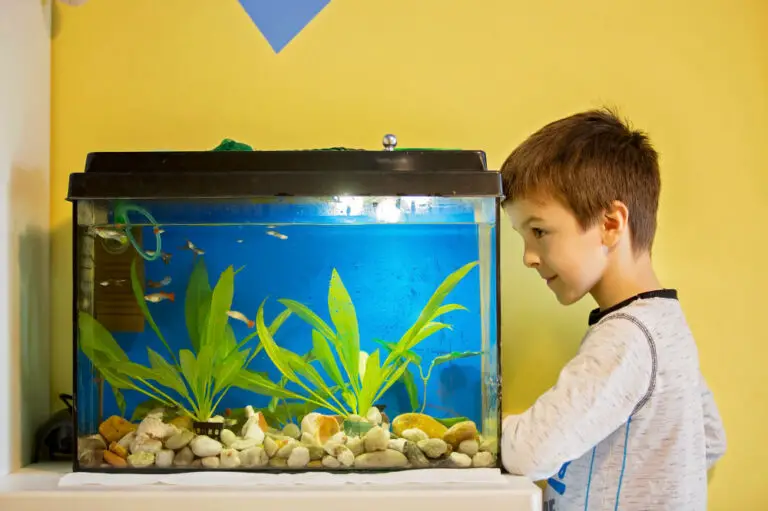How to Get Rid of Protein Foam in Aquarium?
For most aquariums, the best way to get rid of protein foam is by using a protein skimmer. Protein skimmers work by removing dissolved proteins and other organic compounds from the water before they have time to break down into smaller particles that can accumulate in your tank as sludge or foam. Additionally, you should also check your filter for any blockages or clogs that could be preventing proper filtration.
Lastly, make sure to do regular water changes to keep nitrate levels low and reduce organic waste buildup which can cause foaming.
- Identify the Source of Foam: Protein foam can be caused by organic matter that has been suspended in the water, such as uneaten food particles and fish waste. In order to get rid of the protein foam, it is important to identify what is causing it first.
- Increase Water Circulation: Increasing water circulation with a powerhead or an air pump will help remove suspended particles from the water column and reduce foam formation in your aquarium.
- Utilize Chemical Filters: Chemical filters such as activated carbon or phosphate remover media can absorb suspended particulates and also help reduce protein foaming in your tank. Make sure to follow instructions closely when adding these chemical filtration products into your aquarium setup as they may affect overall chemistry if used incorrectly or too frequently.
- Use a Skimmer: A skimmer is a device that pulls out proteins, fats, oils and other dissolved organics from the tank’s surface before they become part of the filter system’s load; this helps prevent protein foaming from occurring in the first place!
- Perform Regular Water Changes: Doing regular partial water changes (at least 10-20% every other week) will help keep levels of nutrients low which in turn should reduce protein foaming over time due to less build up of pollutants within your aquarium ecosystem.
Can Protein Foam Kill Fish?
Protein foam, also known as protein skimming or foam fractionation, is a process used in aquariums that helps to remove organic waste and toxins from the water. While this process can be beneficial for fish health, it can also kill fish if not done properly. If too much bubble formation occurs during the skimming process, oxygen levels in the tank may drop below safe levels leading to suffocation of some of the fish in the tank.
It is important to monitor your protein skimmer closely when using it to avoid accidentally killing your fish.
Protein Foam in Fish Tank
Protein foam in fish tanks is a common problem for aquariums, caused by high levels of dissolved proteins in the water. This can be caused by overfeeding or inadequate filtration, and results in an unsightly foamy layer that forms on top of the tank. To combat this issue it is important to keep up with regular maintenance such as cleaning out debris from the tank and changing filters regularly to ensure proper filtration.
Additionally, feed your fish carefully to avoid overfeeding them which can lead to protein foam accumulation.
How to Get Rid of Foam in Fish Tank?
If you’ve noticed foam forming in your fish tank, there are several steps you can take to get rid of it. The first step is to check the filter and clean out any dirt or debris that may be blocking it. Also, do a partial water change by removing some of the old tank water and replacing it with fresh dechlorinated water.
Finally, using a sponge filter or an air stone will help break up the surface tension on the top of the tank which will reduce foam formation from bubbles.
Foam in Fish Tank After Water Change
When doing a water change in your fish tank, it is important to use foam as part of the process. Foam helps remove dirt and debris from the aquarium by trapping them in its small pores. The foam can then be removed and discarded during a water change, making sure that you have clean and fresh water for your fish.
Additionally, using foam when doing a water change also provides beneficial bacteria with extra surface area on which they can grow, improving overall filtration in the tank over time.
Bubbles in Fish Tank Surface
Having bubbles on the surface of your fish tank is a common sight, and it’s usually nothing to worry about. In most cases, these bubbles are simply caused by air trapped in the water due to over-stirring or excessive aeration from an aquarium filter. The easiest way to get rid of these bubbles is to reduce the amount of stirring you do when cleaning the tank and adjust your filter settings if necessary.
Are Bubbles in a Fish Tank Bad?
Bubbles in a fish tank can actually be beneficial to the overall health of your aquatic ecosystem. They help to oxygenate the water, aid in filtration, and provide an interesting visual element to the tank. However, too much bubbling could indicate an overproduction of waste or an imbalance in the environment caused by overcrowding or inadequate filtration.
It is important to monitor bubble production closely and adjust your aquarium’s parameters accordingly if necessary.
Air Bubbles in Fish Tank
Air bubbles are an important part of a healthy fish tank. They oxygenate the water, which helps keep your fish and other aquatic creatures alive and healthy. Air bubbles also help to circulate the water, preventing temperature fluctuations between different areas of the tank.
This is especially beneficial in large tanks where heated areas may be located at one end while cooler temperatures can exist at the other.
Bubbles on Top of Fish Tank Goldfish
Bubbles on the top of a fish tank goldfish are not only an attractive addition, but they can also be beneficial to your pet. The bubbles provide oxygen and help to circulate the water in your tank, which is important for healthy fish keeping. Additionally, the bubbles may act as an entertainment source for your goldfish – some have been known to play with them!

Credit: www.youtube.com
What Causes Protein Foam in Fish Tank?
Protein foam in fish tanks is caused by many different factors. First and foremost, it can be the result of too much uneaten food or decaying matter that has not been removed from the tank. This will cause bacteria to break down proteins into smaller molecules, which eventually end up as a frothy foam on top of the water.
Too much surface agitation can also cause protein foaming, especially if air bubbles are mixed with tank water containing higher levels of organic materials such as dead plant debris and animal waste products.
Finally, high concentrations of certain minerals in your aquarium’s water like calcium carbonate may contribute to an increase in protein foams due to their ability to bind with proteins and form larger particles that rise to the surface. Keeping good maintenance practices such as regular partial water changes and removing uneaten food promptly can help reduce protein foam buildup and keep your tank looking its best!
Why is There Foam at the Top of My Aquarium?
Having a layer of foam at the top of your aquarium can be alarming for any fish keeper. Foam is typically caused by an accumulation of organic material in the water, including uneaten food, decaying plant matter, and waste from your fish. It’s important to recognize why this foam appears because it may indicate that something is wrong with your tank’s water quality or filtration system.
The first thing you should do when you find foam forming on the surface of your aquarium is test the Ammonia (NH3) and Nitrite (NO2) levels in your tank using a testing kit. High ammonia and nitrite readings can both cause foaming due to increased levels of proteins in the water. If these levels are too high then you will need to perform partial water changes until they return to normal before addressing other potential causes such as inadequate aeration or circulation, poor filter maintenance, overstocking or overcrowding, excess feedings or uneaten food particles left behind after feeding time has ended.
How Do I Get Rid of Bubbles in My Aquarium?
Maintaining an aquarium can be a rewarding experience, but one of the most common problems faced by aquarium owners is getting rid of bubbles in their tanks. Fortunately, there are several easy steps you can take to reduce or eliminate this issue. The first step is to make sure that your aquarium filter and air pump are working properly.
If either of these components isn’t functioning correctly, it could cause excess bubble production due to inadequate filtration or insufficient aeration. Additionally, check all tubing and valves for leaks or cracks; any air escaping from these sources will create additional bubbles in your tank. Finally, if you have live plants in your tank they might be releasing oxygen into the water which can create bubbles as well; try reducing the amount of light exposure they receive as this may help minimize bubbling.
Taking these simple steps should help reduce bubble levels in your aquarium and keep your fish happy!
Why is There White Fluffy Stuff in My Fish Tank?
If you’ve noticed white, fluffy stuff floating in your fish tank, it’s likely that it’s a type of bacteria called “biofilm.” Biofilm can form on the surfaces of tanks and is made up of different types of microorganisms such as fungi, algae and bacteria. It usually appears as a slimy or whitish coating on rocks, plants, decorations and other objects in the tank.
While biofilm may look unappealing to humans, it actually serves an important purpose for your aquarium inhabitants. It provides hiding places from predators and helps protect them from water changes by providing shelter from strong currents or sudden temperature fluctuations. Additionally, biofilms also provide food for beneficial nitrifying bacteria which help keep your tank clean by breaking down organic waste material into harmless substances that won’t harm the fish or any other aquatic life in the aquarium.
Foam on aquarium water – reasons and ways to eliminate bubbles in your fish tank
Conclusion
In conclusion, protein foam in aquariums can be a nuisance if not taken care of properly. By using the steps outlined in this blog post – such as adjusting water parameters and performing regular water changes – you can effectively get rid of protein foam. Additionally, adding a protein skimmer to your tank may help reduce the amount of foam produced over time.
With a little bit of effort and maintenance, you can keep your aquarium looking its best!




